Best Yields on Layer 2 | Q1 2022
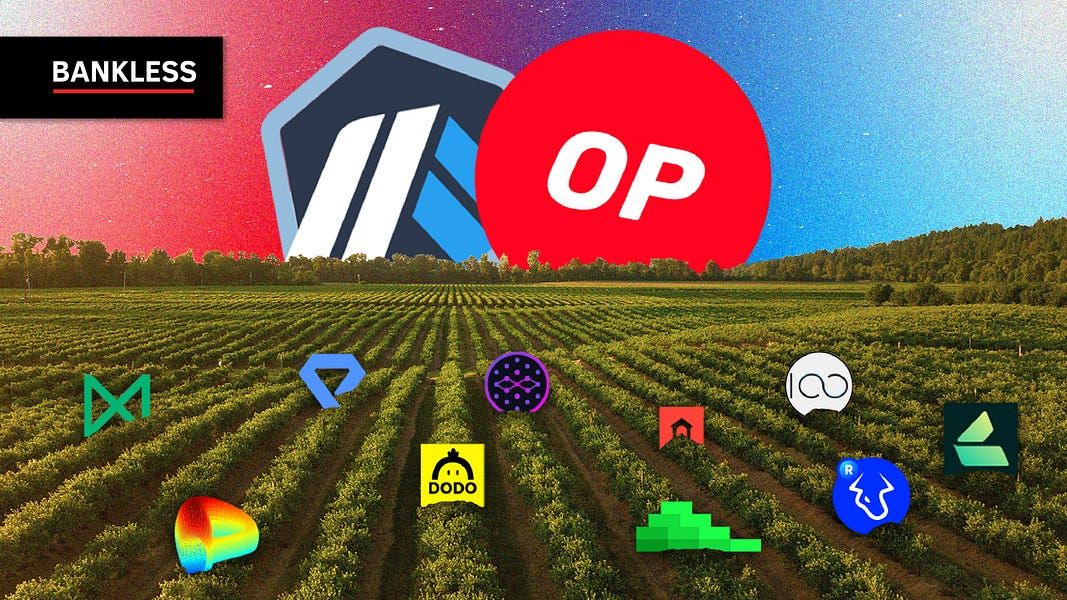
Dear Bankless Nation,
We’re bullish on L2s. Just this year we’ve released five L2 level-ups:
- How to use zkSync
- How to use StarkWare Layer 2s
- Why Layer 2s are the future
- Layer 2 Tokens Are Coming
- How to get ready for L2 tokens
Now we’re taking it one step further:
This is a comprehensive guide on opportunities to earn juicy yields on L2s.
Here’s why these yield opportunities are 🔥:
- More gains on L2s. Gone are the days of triple digit APYs on Compound. But on L2s, where activity is still climbing, APYs have not been diluted and still offer double digit returns in many cases.
- L2s are cheap. What’s the point of aping $100 into a 69% APY pool on mainnet is the gas costs to deposit and withdraw eat your profits away?
- Tokens are coming. Earlier this week, we dropped thoughts on how to qualify for the inevitable L2 token drops. Using L2s increases your chances of receiving future L2 token drops!!!
This guide reminds me of the exuberance I felt in DeFi summer.
If you missed that, don’t miss this.
- RSA
Ethereum gas fees have been untenable for years. And for yield farmers, these gas fees have been seriously eating into profits. You can’t be paying hundreds of dollars in fees when you’re farming with a few thousand, or less. The economics just don’t add up.
Ethereum needs to scale.
Fortunately, this problem has been known for years, and solving it has been a priority since genesis. To that end, the Ethereum community dialed in on a rollup-centric roadmap and it’s finally coming to fruition. Arbitrum, Optimism, and others have all launched on mainnet, opening up the gates for developers to build and degens to ape.
As such, we’ve seen an explosion of applications extend onto L2s while some have bypassed mainnet altogether.
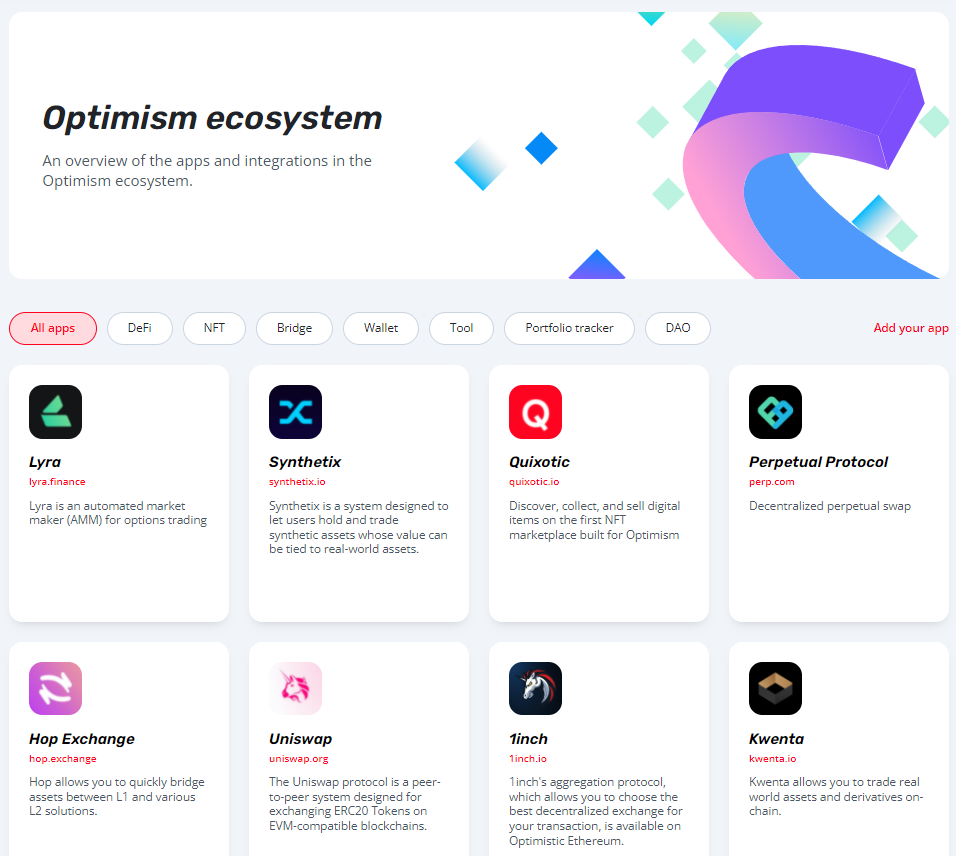
Look closely and you’ll see parallels to DeFi Summer 2020. DeFi apps are coming in droves and offering juicy yield opportunities.
Not only are these yields high, but the gas fees are nothing. Users are paying a couple of bucks to transact instantly on L2, allowing them to reap the full yield rewards without eating into the margins.
But it still takes effort to scour the DeFi ecosystem to find these opportunities. So we did the work for you and put together this 💰 guide.
Here are the best yield opportunities on L2.
⚠️ This guide focuses specifically on Arbitrum and Optimism. While zkSync and Starkware are both L2s, their DeFi activity is still early. Importantly, Polygon is not included as it’s technically a side chain and likely deserves its own guide for another time :)
Best Yields on Arbitrum
Curve

🧠 Curve Finance is the most popular DEX built specifically for trading stables, with minimal slippage and maximal efficiency! Curve V2 opens up the possibility for non-like pairs, providing more options for prospective depositors.
TriCrypto (ETH + USDT + WBTC)
- Risk: Low-Moderate
- Yield: 17% APY (Base + Rewards)
The largest pool by trading volume is the TriCrypto Pool, offering 17% APY in CRV tokens for providing liquidity on the ETH, USDT, and WBTC. In addition, as volume increases, LPs can expect to earn more from trading fees as well!
2Pool (USDT + USDC)
- Risk: Low
- Yield: 8% APY
For those that want to avoid the risk of impermanent loss, Curve is also offering a liquidity mining program on the USDT and USDC pool on Arbitrum, currently boasting 7.4% APY. Similar to above, the majority of the yield derives from Curve’s native token, CRV, but there’s also the potential to earn sizable rewards from trading fees.
Dopex

🧠 The Dopex Single-Sided Options Vault is a newer DeFi primitive. It allows users to lock tokens and choose 3 call option strikes where the vault will automatically farm rewards from the call options and automatically compound them for stakers.
Singled Sided Options Vault (ETH)
- Risk: Moderate-High
- Yield: 16% APY
Dopex’s SSOV for ETH allows you to lock tokens and sells call options to users. The rewards are automatically compounded for users for an APY of 16%. If you’re looking for yields on other tokens, check out the vaults for DPX and gOHM!
Hundred Finance
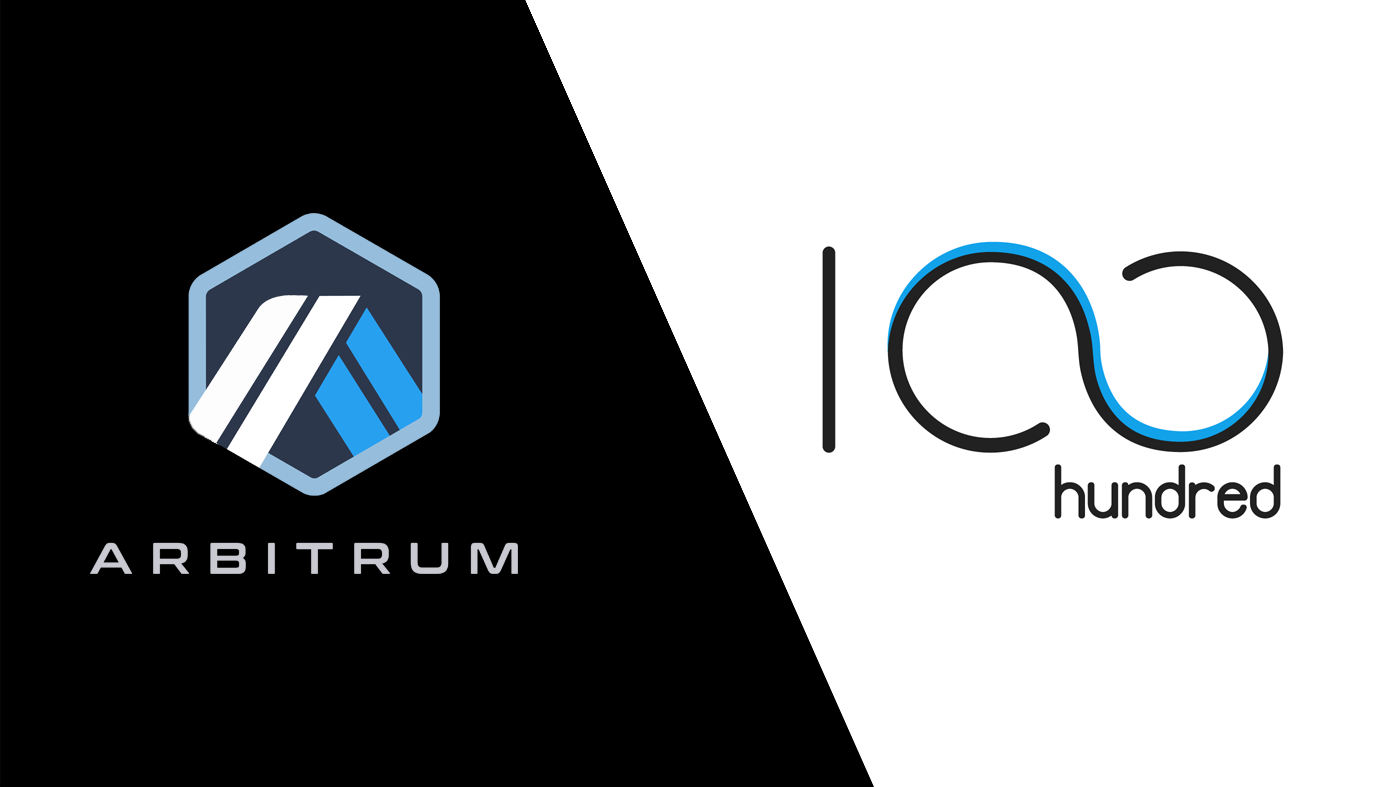
🧠 Hundred Finance is a lending and borrowing protocol similar to Compound or Aave. The caveat here is that it implements the veToken model found in Curve for its native token. As such, users can earn a higher APY yield (in the form of HND) by locking up more HND for an extended period of time.
USDC Pool
- Risk: Moderate
- Yield: 8-20% APY
Given the implementation of the veToken model, pool yields depend on how long you lock HND tokens for—if at all. The current rate on USDC ranges from 8% APY to as high as 20% APY to those that lock HND tokens for the maximum amount of time of 4 years.
FRAX Pool
- Risk: Moderate-High
- Yield: 9-23% APY
For those that are fans of FRAX’s algorithmic stablecoin, Hundred Finance also offers a substantial yield for those who deposit the FRAX, depending on the amount of HND the depositor locks. The current yield ranges from 9-23%, with the majority of the rewards denominated in the HND tokens.
Synapse

🧠 Synapse is a cross-chain liquidity protocol that facilitates swaps across different L1s, L2s, and sidechains. The protocol offers a range of opportunities for depositors to provide this cross-chain liquidity, boasting noticeable yields across the board.
ETH Pool
- Risk: Moderate
- Yield: 9% APY
The Synpase ETH pool is currently pumping out a 9% APY for anyone who helps provide liquidity for cross-chain (L1s and L2s) swaps. This includes LP’ing with WETH and nETH on Arbitrum!
3Pool
- Risk: Moderate-High
- Yield: 15%
In addition to the ETH Pool, Synapse also offers a 3Pool for those looking to earn a yield on stablecoins. As of writing, this amounts to 15% APY for those that deposit USDC, USDT, and nUSD (Synapse’s native cross-chain stablecoin).
Dodo Finance

🧠 Dodo is a unique liquidity protocol that allows for single-sided liquidity provisioning on its AMM. The team recently deployed it to Arbitrum along with a handful of liquidity incentives across different pools.
WETH/USDC Pool
- Risk: Moderate
- Yield: 13% APY
The most prominent pool is the WETH/USDC pool which is offering 13% APY in DODO. Remember: you can single side either WETH or USDC into the pool to earn the rewards. From there you’ll need to stake your LP tokens to start earning DODO.
WBTC/USDC
- Risk: Moderate
- Yield: 11% APY
Dodo’s Arbitrum deployment also offers a liquidity mining program WBTC/USDC pool, which currently boasts an 11% APY in DODO for anyone who provides liquidity. As mentioned above, Dodo offers single-sided opportunities so you have the ability to deposit just WBTC or USDC into the pool to start earning the yield.
Impermax

🧠 Impermax is a permissionless lending protocol for Leveraged Yield Farming, where users can participate in isolated lending markets using LP tokens. Each lending pool is represented by an LP position, allowing for the depositor or borrow to farm while they also earn tokens.
WBTC/WETH Sushiswap LP Pool
- Risk: Moderate-High
- Yield: 5-27% APY
Impermax offers a bunch of markets for different LP tokens. What’s interesting about Impermax is that users can deposit tokens, use that collateral to borrow more LP tokens, and redeposit the borrowed funds to extend their gains. This is called recursive borrowing, or leveraged yield farming. If you can imagine, there’s obviously liquidation risks associated with this!
With that in mind, including trading activity for the wBTC/wETH LP pair on Sushiswap, Impermax boasts a total 25% APR for those that supply WBTC/ETH Sushiswap LP tokens and take on max leverage.
USDC/USDT Swapr LP
- Risk: High
- Yield: 18-225% APY
With massive amounts of USDC/USDT trading volume, Imerpmax offers a leveraged APY of 225% for LP tokens from the Swapr AMM. The pool offers a base 18% APY for those that deposit USDT into the pool. But again, depositors can get leveraged yields by borrowing and redepositing the USDC/USDT LP tokens into Impermax to scale up to the max APY mentioned above.
Premia
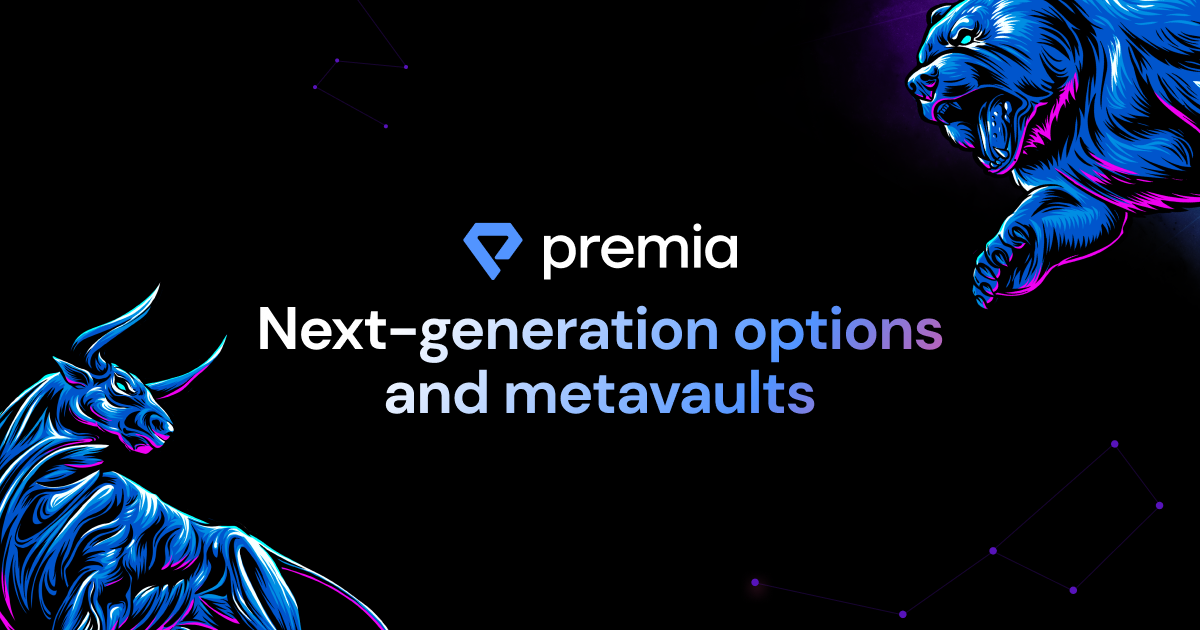
🧠 Premia is an options AMM protocol built on Arbitrum. The protocol offers six pools for both ETH, BTC and LINK call and put pools. For all call pools, users deposit the native token into the vault. For put pools, users deposit DAI. The majority of the yield on Premia is generated from underwriting options, collecting premiums in return. All pools are also subsidized with Premia’s native token via liquidity mining.
ETH Call Pool (ETH)
- Risk: High
- Yield: 56%
At the time of writing, the Premia ETH Call Pool is earning 56% from call option premiums and PREMIA. This is one of the highest yields on Arbitrum for ETH depositors. The downside is that it’s not available in certain jurisdictions, including the United States (thanks SEC).
WBTC Call Pool
- Risk: High
- Yield: 60%+
As mentioned, Premia offers a WBTC Call pool which earns a yield from underwriting call options on WBTC. Similar to the ETH pool, a majority of the yield comes from this strategy, but there’s also a subsidy from the protocol’s PREMIA liquidity mining program!
Cap Finance

🧠 Cap Finance is a decentralized trading protocol on Arbitrum. The protocol allows users to trade with up to 50x leverage. On the other side of the market, users can deposit ETH into the borrowing pool where the yield is generated from trader losses.
ETH Pool
- Risk: High
- Yield: 144%
Cap Finance ETH pools offer high yields, but at high risk! All of the yield on Cap Finance is earned when traders on the platform lose money through high leverage. Therefore, if the aggregate of traders are in profit, you would earn a negative yield! No one said triple-digit APYs were simple!
USDC Pool
- Risk: High
- Yield: 47% APY
Similar to the ETH Pool, Cap Finance also offers a USDC pool for those that want a bit more stability in their position. The pool is currently projecting a 47% APY for USDC deposits!
Best Yields on Optimism
Synapse

🧠 Synapse is a cross-chain liquidity protocol that facilitates swaps across different L1s, L2s, and sidechains. The protocol offers a range of opportunities for depositors to provide this cross-chain liquidity, boasting noticeable yields across the board.
ETH Pool
- Risk: Low
- Yield: 5-6% APY
Similar to the Arbitrum Pool, Synapse also has an ETH/nETH pool on Optimism. However, the yield is slightly lower sitting at 5.6% APY for depositors.
Barnbridge

🧠 BarnBridge is a decentralized protocol for tokenizing risk. The project offers blockchain-based products that help users hedge against, and calibrate their exposures to, DeFi yield fluctuations. Barnbridge recently deployed its fixed rate protocol to Optimism, featuring a number of pools including ETH, WBTC, SNX, and LINK for prospective depositors to ape into.
WETH Pool
- Risk: Moderate-High
- Yield: N/A
Given how new Barnbridge’s deployment is on Optimism, the numbers here are still fairly early to calculate. but if you’re interested in learning more about Barnbridge and how it works, I recommend leveling up with our guide here.
WBTC Pool
- Risk: Moderate-High
- Yield: N/A
Similar to the ETH pool, Barnbridge also has an opportunity for WBTC holders on Optimism! If you’re new, you can learn more about how Barnbridge works here.
Lyra
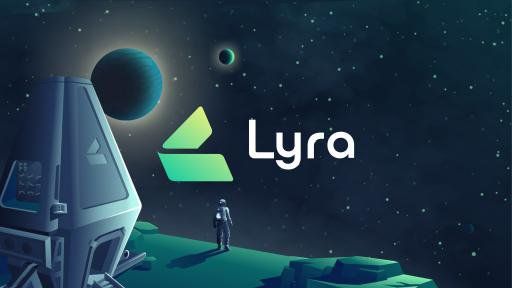
🧠 Lyra is an options protocol built on top of Synthetix. As with all Synthetix ecosystem projects, it elected to use Optimism as its scaling solution. The options protocol offers a range of single-sided staking opportunities with sUSD.
sUSD Pool for ETH, WBTC, and LINK
- Risk: Moderate
- Yield: 39-49% APY in LYRA
Lyra is currently offering juicy yields for ETH, wBTC, and LINK. The protocol subsidizes users with LYRA in return for locking their sUSD into each respective pool.
⚠️ Outside of standard smart contract risks and the protocol being new, Lyra generates yield by taking on long delta positions that are fully collateralized. This means that it’s currently deployed without the ability to hedge. However, Synthetix is undergoing a governance process to add “short synths” on Optimism, so expect this risk to be mitigated once that’s live.
Pika Protocol
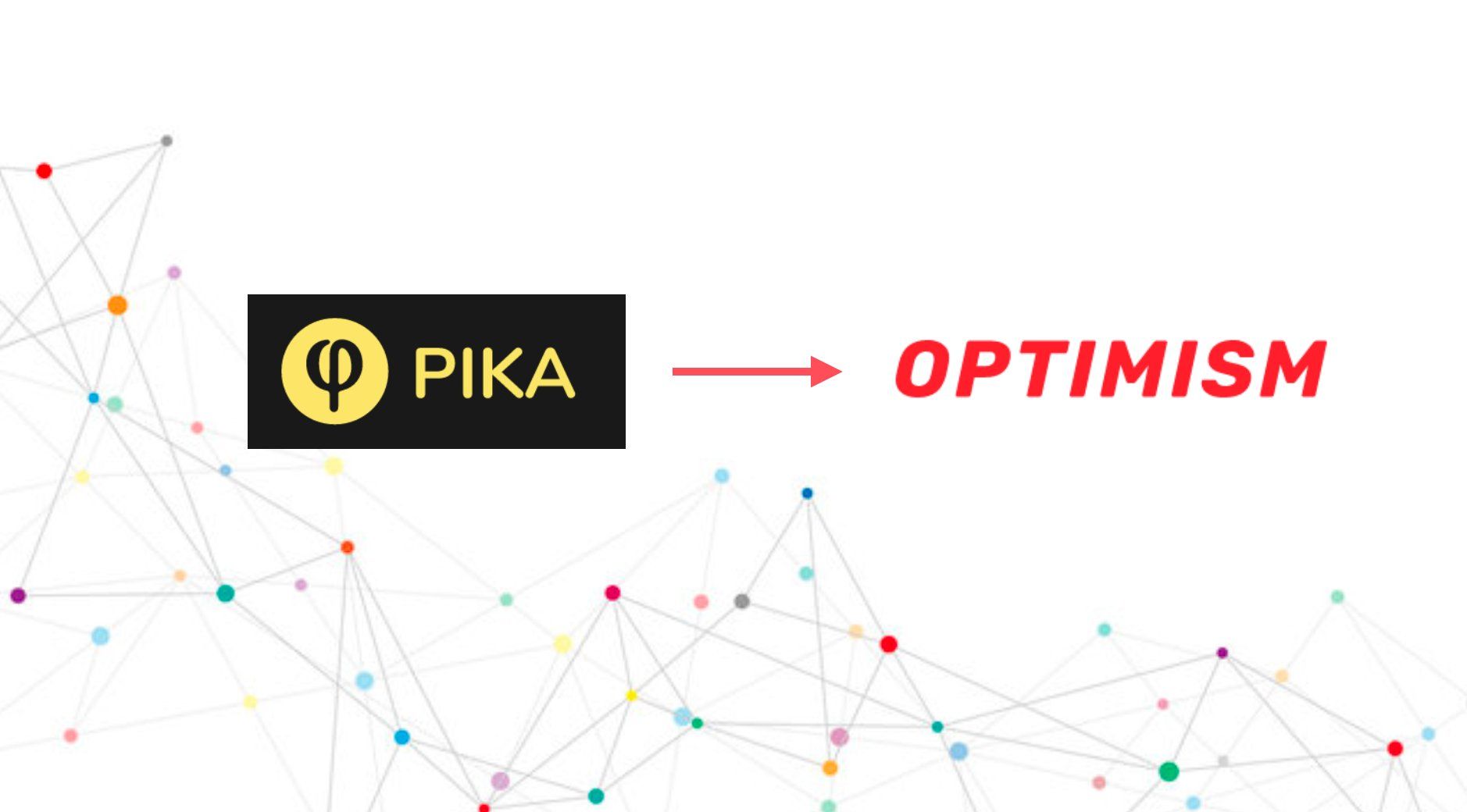
🧠 Pika Protocol is a decentralized perpetuals swap exchange on Optimism that supports up to 50x leverage trades.
USDC Vault
- Risk: High
- Yield: 14.5% APY
Similar to Cap Finance on Arbitrum, yield is generated for LPs that take the opposite side of a trade. The vault pays for trader profits and receives trader losses. In addition, it also receives trading fees, interest, and liquidation profit of trades. Currently, Pika’s USDC vault offers 14.5% APY.
Perpetual Protocol

🧠 Similar to Pika, Perpetual Protocol is a decentralized exchange for perpetual contracts. Using perpetual contracts, users can open leveraged long or short trading positions for a variety of assets.
BTC Pool
- Risk: Moderate
- Yield: 10-125% APR
Perpetual Protocol pool returns can vary wildly as they’re dependent on both base APRs (from trading fees) and pool rewards (LM fees). Trading fees are in ETH while LM rewards are in Perp.
ETH Pool
- Risk: Moderate
- Yield: 12-500% APR
Similar to the BTC pool, APRs are heavily dependent on trading activity and LM rewards. However, out of all the pools on Perp, ETH does have the highest volume.
Conclusion
Ethereum Layer 2s are growing at a rapid pace.
More protocols are deploying on these emerging systems every week, providing more and more opportunities for yield farmers. If Ethereum gas fees are preventing you from aping into your favorite farms, Layer 2s are the answer.
The best part is that it’s just getting started. Major protocols like Aave, Compound, Maker, and others are amid the process of deploying their protocols on Layer 2s while centralized exchanges are gearing up to support direct withdrawals and deposits. This doesn’t even account for the plethora of L2 native applications that are being built, and where a lot of the potential opportunities will lie.
The last part worth noting is that Layer 2 tokens are coming. No one knows exactly how they’ll distribute their native tokens, but the safest bet is to start using these platforms today, in any capacity you can.
It’s #L222, mfers.
Action steps
- 📑 Read why we’re expecting to see L2 tokens late this year and into 2023
- 🤑 Understand why earning yield on L2s could qualify you for L2 tokens
- 🎓 Check out our content on Abritrum, zkSync, Optimism, and StarkWare